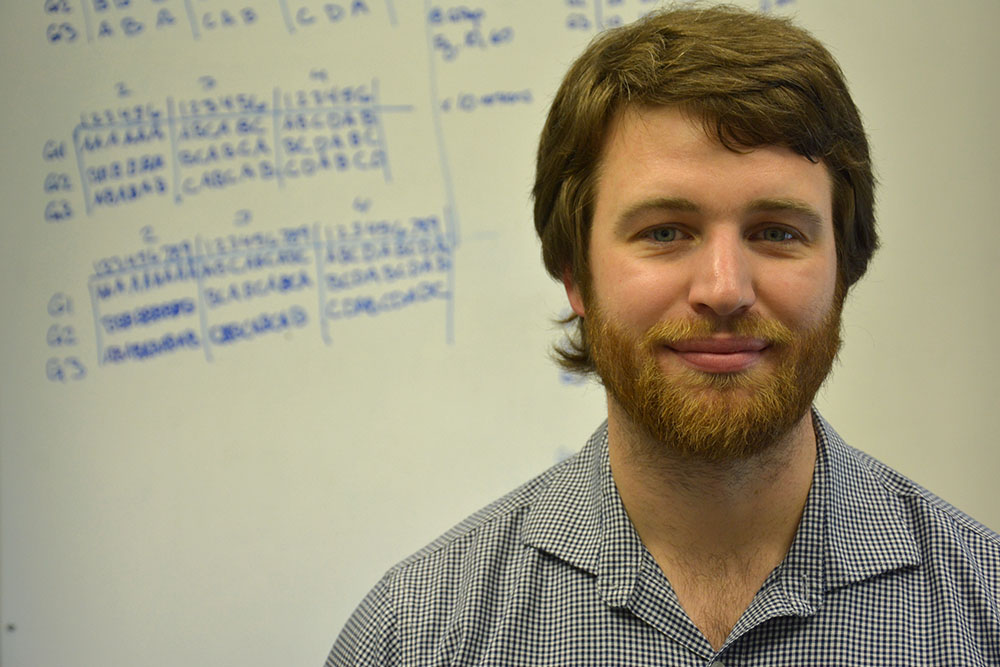COSAM News Articles 2018 April New Research Characterizes Instructional Styles in Over 2,000 STEM Classrooms
New Research Characterizes Instructional Styles in Over 2,000 STEM Classrooms
In 2012, a report by the President’s Council of Advisors on Science and Technology predicted that the United States would need to produce an additional 1 million new STEM professionals by 2022 if we are to maintain our historic preeminence in the fields of science, technology, engineering and mathematics, or STEM. As a result, the number of students receiving undergraduate STEM degrees must increase between 2012 and 2022 by some 34 percent annually over the 2012 rates.
A major stumbling block toward achieving the necessary increase in undergraduates receiving degrees in STEM fields are the introductory courses offered at institutions around the country.
“Intro courses see a relatively high proportion of Ds, Ws and Fs in STEM, and we want to know what we can do about that,” said Jordan Harshman, assistant professor in the Department of Chemistry and Biochemistry. “We want to take a robust, systematic approach to identify what improves student retention, increases conceptual knowledge and learning outcomes, and ultimately produces more students—particularly those from underrepresented backgrounds—with degrees in STEM fields.”
Prior to joining the faculty at Auburn in the fall of 2017, Harshman was a postdoctoral researcher at the University of Nebraska-Lincoln, where he worked with Associate Professor Marilyne Stains on the largest research project to-date that characterized teaching strategies. The study was recently published in the journal Science in a paper Harshman co-authored titled, “Anatomy of STEM teaching in North American universities.” The study evaluated more than 2,000 classes taught by over 500 STEM faculty members across 25 institutions.
“We know that there is and has been a big push to reform instruction, but no one has established a baseline of instructional profiles used in STEM classes on a national scale,” said Harshman. “We wanted to know what you see when you walk into a STEM classroom: what kinds of interactive teaching strategies are being used? Is it primarily lectures?”
Harshman’s study indicated that despite nationwide efforts to increase student-centered learning in the classroom, approximately 55 percent of STEM courses are primarily lecture-based or “didactic” instruction. Twenty-seven percent of STEM instructors supplement lectures with more student-centered strategies. Only 18 percent of instructors were classified as student centered.
Smaller class size and flexible seating increased the likelihood that instructors incorporated student-centered teaching. However, even with smaller class enrollment and adjustable seating, about half the instruction in this group was classified as didactic.
The study also noted that individual instructors vary their teaching from day to day, so much so, that at least four observations are necessary for reliable characterization of teaching.
“Besides being the largest comprehensive study to-date on undergraduate STEM teaching in the U.S., the strength of our methods come from gathering observational evidence from COPUS rather than self-reported teaching strategies,” said Harshman.
The COPUS, or Classroom Observation Protocol for Undergraduate STEM, requires the documentation of one of 25 student and teacher behaviors in class. Harshman developed a free application available to all faculty who are interested in learning more about their own instructional practices using COPUS data.
“The second you say ‘classroom observation,’ faculty can get unnerved. That’s one of the reasons I love COPUS, because there isn’t any value judgement to it,” said Harshman. “The results just show you what happened, and you can use the information however you see fit. Our app then matches a COPUS observation from faculty to one of the seven instructional profiles identified in our study to approximately 85% accuracy for their own feedback.
“Research evidence definitely suggests that active learning techniques lead to improved student outcomes. If faculty wish to monitor the levels of active learning they implement in their classes, I encourage them to use our COPUS app. It requires relatively little time and can really help you be mindful of your teaching strategy.”
For more information on Harshman, visit his website.
Latest Headlines
-
02/12/2025
-
02/11/2025
-
02/10/2025
-
01/30/2025
-
12/03/2024

